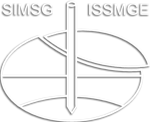Analysis of Arithmetic Models for Predicting Calorific Values of Landfilled Municipal Solid Waste
Analysis of Arithmetic Models for Predicting Calorific Values of Landfilled Municipal Solid Waste
Arithmetic models have been used for predicting the calorific value of fresh municipal solid wastes (MSW) based on their gravimetric and elemental compositions. However, the use of these models for landfilled MSW is still recent, although the calorific value of landfilled MSW is very important for landfill mining projects. Landfill mining, a technique used to mine MSW from sanitary landfills and dumps, aims to recover materials and mitigate environmental impacts. The present research aimed to determine and apply experimental data of landfilled MSW to arithmetic mathematical models which predict Higher Heating Value (HHV) and Lower Heating Value (LHV) to validate these models by comparing theoretical and experimental values. A representative MSW sample aged approximately 8 years was mined from a sanitary landfill of Campinas city, south-eastern Brazil. Five compound samples (Plastics, Rubbers, Easily Degradable (ED), Diapers and Textiles, and the landfilled MSW without Fines and Dangerous categories (LMSW)) were submitted to HHV, LHV, elemental composition and gravimetric composition tests. Data from elemental composition and gravimetric composition tests were used to predict theoretical HHV and LHV values through four arithmetical mathematical models from the technical-scientific literature. Results showed that elemental and caloric values of landfilled MSW categories were in accordance with the values reported in the literature, indicating potential to be used in incineration plants and generate energy. A model based only on element C predicted better the calorific value of compound samples of landfilled MSW categories, such as Rubbers, and Plastics. On the other hand, gravimetric composition models predicted better the calorific value of the LMSW. A model based on elements C, H, S, and O did not predict appropriately the calorific value of the LMSW compound sample, however, predicted the calorific value of the rubber and ED compound samples with excellent accuracy according to the Mean Absolute Percentage Error (MAPE) classification.
D. Romeiro; M. Leme; C. Takeda; M. Miguel
9th International Congress on Environmental Geotechnics (ICEG2023)
Landfilling
https://doi.org/10.53243/ICEG2023-387
